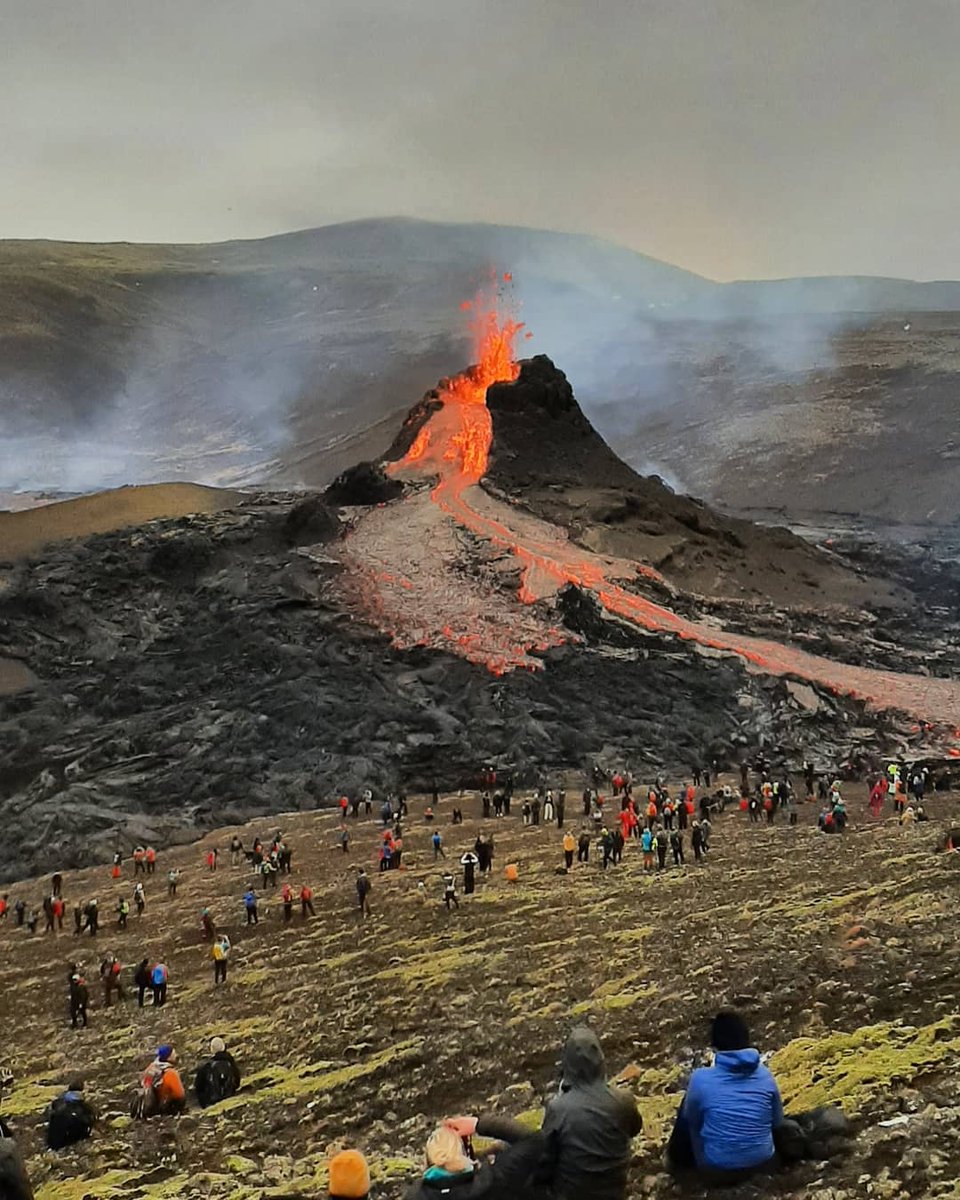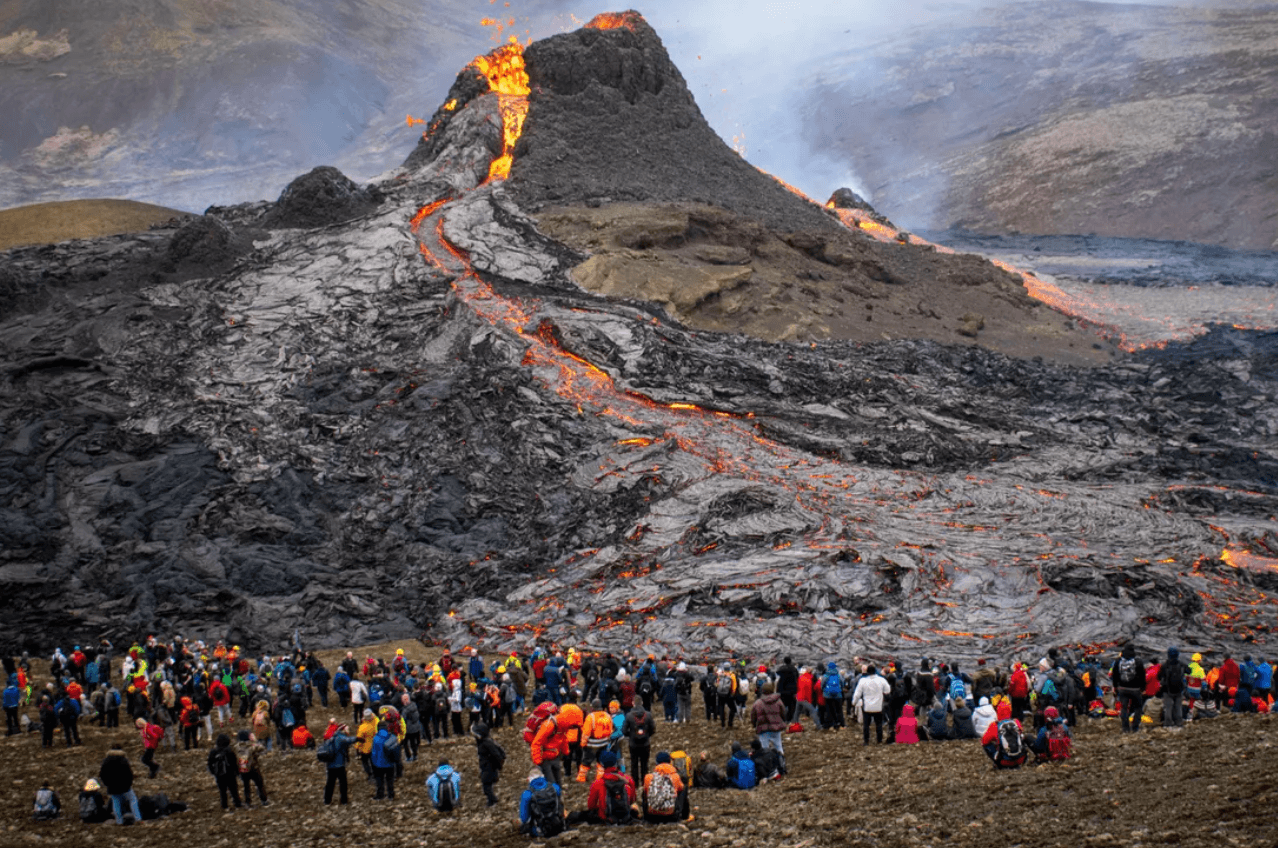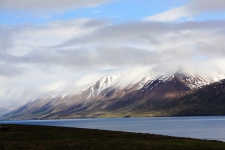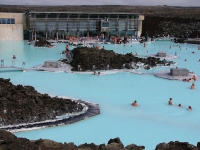Fagradalsfjadl volcano woke up and fell asleep in 2021 and woke up again in 2023! So everyone who did not have time to look at the active volcano is invited to this light show! It is especially interesting that the Fagradalsfjadl volcano is located in a convenient place to view, it is easy to get there, and you can watch the eruption quite closely.
The Fagradalsfjadl volcano has been sleeping for more than 6,000 years and on March 19, 2021 it woke up and erupted until September. In 2023, it woke up again, this time a large amount of magma is accumulating under the town of Grindavik and at any moment lava flows can break through to the surface. And in 2024 there were some more eruptions, so who knows what 2025 will bring?!
Every day, many volcanoes erupt in the world, so why does the Fagradalsfjadl volcano attract tourists so much? And everything is very simple - it is located just 30 km from the capital of Iceland, Reykjavik. And you don't need to climb it for several days or enter it by cable car.
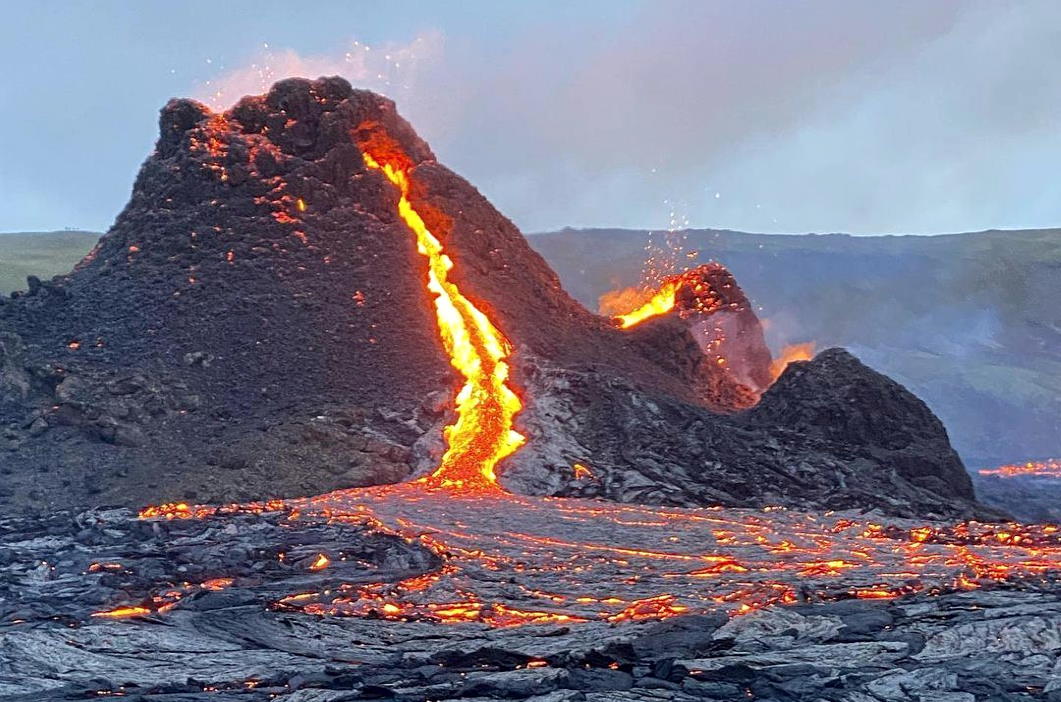
Content:
- Where is Fagradalsfjadl volcano and how to get there?
- Why is the Fagradalsfjadl volcano one of the best to observe
- Eruption of the Fagradalsfjadl volcano 2023
- Rules of entry to Iceland 2023
Where is Fagradalsfjadl volcano and how to get there?
The Fagradalsfjadl volcano is located on the Reykjavik Peninsula, it is here that Keflavik International Airport is located. And the volcano itself is located 48 km by road from Reykjavik and 30 km from Keflavik Iceland International Airport and just 7 km from the historic town of Grindavik.
At the very beginning of the eruption, no one knew how powerful it would be, so the airport was even closed for a couple of days, but it soon became clear that the eruption was quite peaceful and locals and tourists who were in Iceland reached out to it. The Icelandic authorities quickly realized (although not very quickly, because videos of people grilling sausages over a volcano appeared on the Internet) that tourists needed to be organized. Parking lot and a trail to fresh lava fields were marked.
Authorities have published a new map with a path from which you can safely observe the volcano. The trail is about 7 km long, and the whole round trek will take about 5-6 hours. So do not be lazy to check the weather and wind direction, do not forget about the weather, which is constantly changing in Iceland.
Weather and precipitation in Iceland by month
The average temperatures in different regions of Iceland can vary greatly by month. Rains are more likely somewhere, and somewhere it will be warm and relatively dry.<...
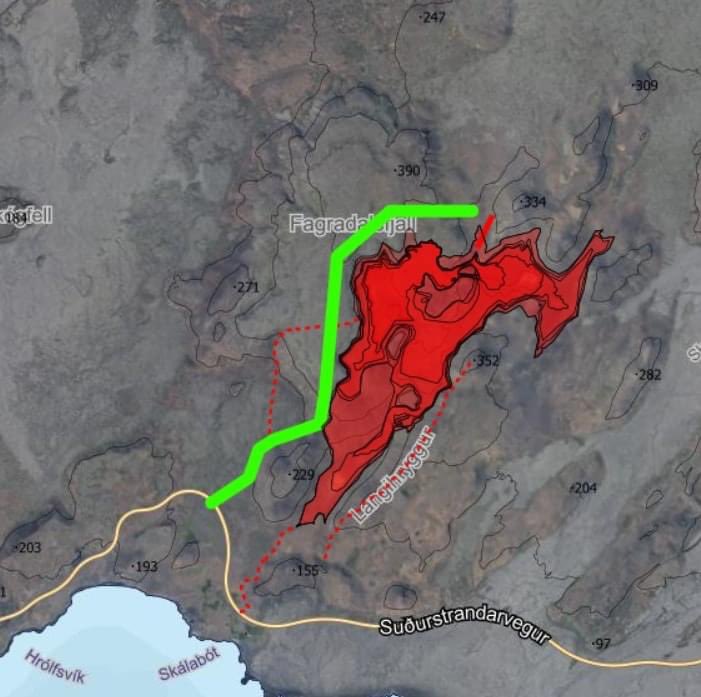
It is best to get to the starting point of volcano trail by car, but be prepared for long traffic jams, because everyone wants to see how the volcano erupts. However, there are organized tours from Reykjavik - a 5-hour tour to the Fagradalsfjadl volcano
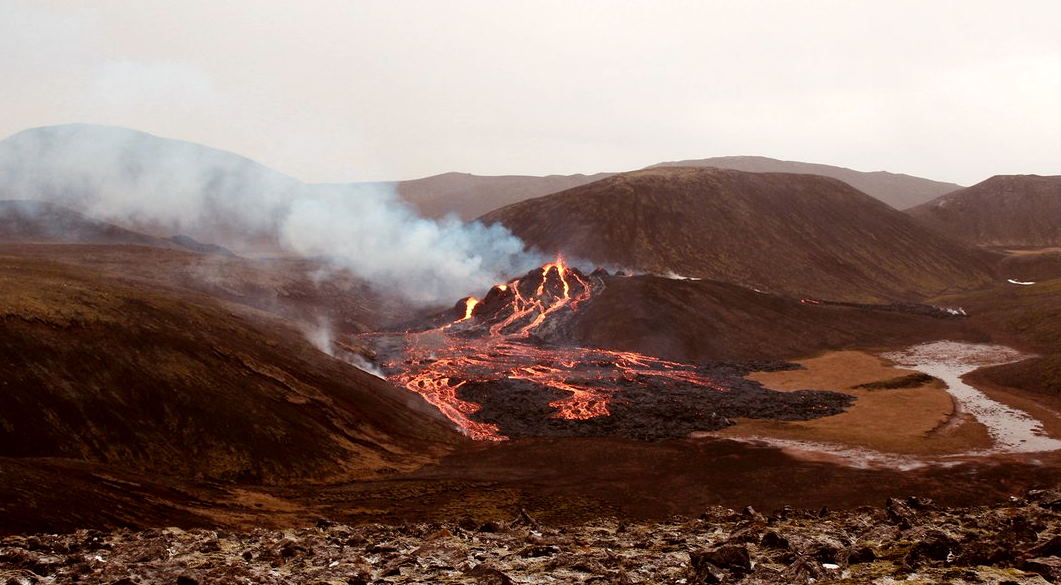
Why is the Fagradalsfjadl volcano one of the best to observe
The Fagradalsfjadl volcano is located in a hilly area, but it is not the classic cone with which we used to associate volcanoes. The erupting Fagradalsfjadl volcano is not like that, to see the eruption, it is enough to climb a hill with a height of only about 200 meters and now you have burning lava in front of you. And from a low cone in the distance, red-hot magma splashes out.
Seismologists suggest that the Fagradalsfjadl volcano may erupt for several years, so everyone will be able to see it. However, this is nature, which means you can't be sure of anything. Therefore, residents and visitors of Iceland do not postpone that and go to watch the erupting volcano, so many kilometers of traffic jams form on the roads around (as for beginning of eruption in 2021).
Eruption of the Fagradalsfjadl volcano 2023
The Fagradalsfjall volcano has become unstable since November 2023 and Iceland's meteorological bureau has stated that an eruption is imminent.
Icelandic authorities have declared a state of emergency after hundreds of small earthquakes at the Reykjanes Peninsula (the most densely populated region of Iceland) for more than two weeks.
Seismic activity in Iceland began in the area north of Grindavik, a fishing town with a population of 3,400 people, which was evacuated. Residents were allowed to return only for a short time to collect their belongings.
According to the Civil Protection Agency, the magma corridor under the earth's surface now stretches for 15 kilometers from the city to the Atlantic Ocean. Sensors detected sulfur dioxide in the air, indicating that a mixture of melted and semi-melted rock is approaching the surface and an eruption may be imminent.
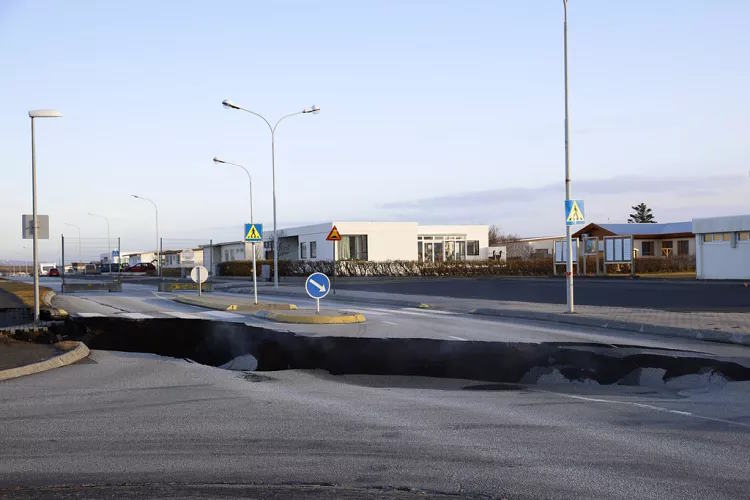
In and around Grindavik, seismic activity has already caused large cracks to appear on roads and golf courses.
Despite the fact that Keflavik International Airport — Iceland's main international airport — is located just 15 kilometers north of the eruption site, it has not been closed and flights are still arriving and departing.
The Blue Lagoon Geothermal Spa, one of Iceland's largest tourist attractions, has been temporarily closed since November 9 due to the earthquake and will be closed at least until November 30, 2023.
Guests rushed to leave the resort's hotels early on Thursday morning, November 9, after they were woken up shortly before 1 a.m. by a magnitude 4.8 earthquake, the strongest that has occurred in the region since the start of the recent wave of seismic activity on October 25, 2023.
According to scientists, the volcano may begin to erupt less than 3 kilometers from the Blue Lagoon. In the worst case scenario, lava will threaten the city of Grindavik and the Blue Lagoon, as well as pipelines supplying hot water to thousands of homes that are heated by geothermal energy.
The Blue Lagoon in Iceland: A Relaxing Oasis in the Land of Fire and Ice
Iceland is a land of stark contrasts, where rugged landscapes and stunning natural wonders coexist in harmony. Amidst the dramatic scenery and otherworldly beauty, the...
Rules of entry to Iceland 2023
Restrictions related to COVID - in fact, there are no any restrictions, Iceland has refused to check tests, vaccinations, so now according to the usual approach: get a visa, if you need it and go ahead!
Restrictions on flights and visits to Iceland related to the eruption:
The Icelandic authorities have raised the aviation danger level to orange, indicating an increased risk of a volcanic eruption. Volcanic eruptions can pose a serious danger to air travel, as the release of ash into the atmosphere can lead to jet engine failure, damage to flight control systems and reduced visibility.
But currently (November 17, 2023) flights to the nearby Keflavik International Airport are still operating as usual, and all access roads are still open.
Visitors are advised to stay away from the city of Grindavik and its surroundings. Iceland's Ministry of Foreign Affairs prohibits travel to the city and warns that "visitors of Iceland should always follow the instructions of the local authorities."
However, no one has issued a travel ban to Iceland, which means that airlines and travel companies are operating as usual.
